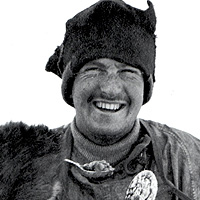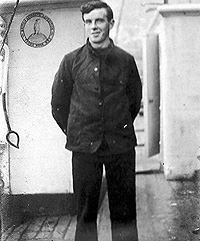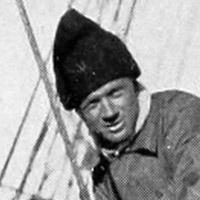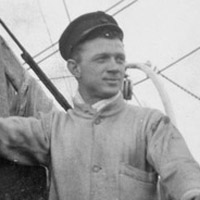British Antarctic Expedition 1910-13
Crew of the Terra Nova
Robert Falcon Scott
Terra Nova Expedition: The pole - p.1 - Preparations | The pole p.2 - Journey | The wider Terra Nova expedition | Time-line and info graphic | Crew of the Terra Nova | What went wrong for Scott to die? | What did Scott's team die of? | Race to the pole Amundsen and Scott | The Northern Party
The Crew Alphabetically
Shore party
Abbott, George Percy - petty
officer, R.N.
Archer, W.W. -
Chief steward, late R.N.
Atkinson,
Edward L. , R.N. - surgeon, parasitologist
Bowers, Henry Robertson - Lieutenant
Brewster, A. - Able seaman
Browning, Frank V. - petty officer,
2nd class, R.N.
Campbell, Victor
- Lieutenant, R.N.
Clissold,
Thomas - cook, late R.N.
Crean,
Tom , petty officer, R.N.
Dickason,
Harry - Able seaman, R.N.
Evans,
Edgar - petty officer, R.N.
Evans,
Edward R.G.R. - Lieutenant, R.N. "Teddy Evans"
- second in command, and Captain of the Terra Nova
Forde, Robert - petty officer,
R.N.
Girev (Geroff), Dmitrii
- Dog driver
Hooper, Frederick.J.
- Steward, late R.N.
Keohane,
Patrick - petty officer, R.N.
Lashly,
William - chief stoker, R.N.
Levick,
G. Murray - Surgeon, R.N.
Oates,
Lawrence , Capt. 6th Iniskilling Dragoons
Omelchenko, Anton - Groom
Scott, Robert Falcon Commander, R.N. -
Expedition leader
Williamson,
Thomas, S. - petty officer, R.N.
Scientific Staff
Day, Bernard C. - Motor engineer
Debenham, Frank - Geologist
Cherry-Garrard, Apsley -
Assistant zoologist
Gran, Tryggve
- ski expert
Meares, Cecil H.
- in charge of dogs
Nelson,
Edward W. - Biologist
Ponting,
Herbert G. - Camera artist
Priestley,
Raymond E. - Geologist
Simpson,
George - Meteorologist
Taylor,
T. Griffith - Geologist
Wilson,
Edward Adrian - chief of scientific staff and biologist
Wright, Charles Seymour - Physicist
Ship's Party
Bailey, Arthur S. - Petty officer,
2nd class, R.N.
Balson, Albert
- Leading seaman, R.N.
Brissenden,
Robert - Leading stoker, R.N.
Bruce,
Wilfred M. - Commander, R.N.R.
Burton,
William - Leading stoker, R.N.
Cheetham,
Alfred B. - Boatswain (Bosun), R.N.R.
Davies, Francis Edward Charles
- Leading shipwright, R.N.
Dennistoun,
James R. - In charge of mules in the ship.
Drake, Francis R.H. - Asst. Paymaster,
R.N. (retired), secretary and meteorologist in the
ship.
Heald, William Lofthouse
- R.N., Late P.O.
Horton, William
A. - Engine room artificer, R.N. 2nd Engineer
Knowles, William - Able seaman
Lammas, Charles - Fireman
Leese, Joseph - Able seaman, R.N.
Lillie, Dennis Gascoigne - Biologist
on the ship
Mather, John Hugh
- Petty officer, R.N.V.R.
McCarthy,
Mortimer - Able seaman
McDonald,
Angus - Fireman
McDonald, William
- Able seaman
McGillon, Thomas
- Fireman
McKenzie, Edward A.
- Leading stoker, R.N.
McLeod,
Thomas F. - Able seaman
Neale,
W.H. - Steward
Oliphant, Robert
- Able seaman
Parsons, Frederick
- Petty officer, R.N.
Paton,
James - Able seaman
Pennell,
Harry L.L. - Commander, R.N.
Rennick,
Henry E. de P. - Lieutenant, R.N.
Skelton,
James - Able seaman
Stone, Bernard
J. - Leading stoker, R.N.
Williams,
Charles - Able seaman
Williams,
William - Chief engine room artificer, R.N. Engineer
Other crew members (served for a short time only, usually as ships party)
Bradley, Percy, Oscar, Derry
- Ordinary seaman
Copp, W.J.
- Ordinary seaman
Kelly, W.
- Fireman
Webb, J.K. - E.R.A.
2d
The Crew In More Detail
Shore Party
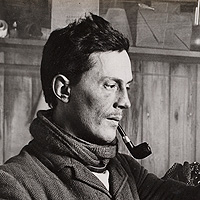
Atkinson, Edward Leicester R.N. - surgeon, parasitology
Born on the 23 November 1881 in Trinidad, he qualified as a doctor in 1906.
He was in command of the Terra Nova Expedition's Cape Evans base for most of 1912 and as a doctor cared for several patients through a difficult winter. He led the party which found the tent with the bodies of Scott, Bowers and Wilson. He served with distinction in the WW1 being decorated twice and wounded several times. He served in the navy until he died suddenly in 1929 at the age of 47.
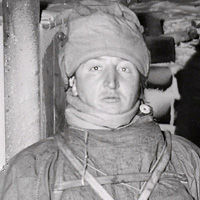
Bowers, Henry Robertson "Birdie" - Lieutenant
A Scot, born in Greenock in 1883, he became a sea cadet and joined the navy serving in India before being recommended to Scott by Sir Clements Markham being appointed without an interview.
Originally storekeeper on the ship, he accompanied Cherry-Garrard and Wilson in their trip to Cape Crozier to retrieve an emperor penguin egg. Bowers was originally one of the men who was to aid with supporting the South Pole attempt though not a part of the final party. Scott included him however when the support team turned back making him the 5th member of what had been planned logistically as a 4 man group. He died on the way back from the South Pole with Scott and Wilson in their tent, he was 29.

Campbell, Victor Lindsay Arbuthnot - First Officer - Lieutenant, R.N.
Born in Brighton, England in 1875, received a Royal Navy commission in 1895 which he resigned in 1901 to live the life of a country gentleman before joining Scott on the Terra Nova.
Campbell led an Eastern Party of 6 men to carry out scientific work, failing to find a landing site, they returned westward again when he met Roald Amundsen on the Fram in the Bay of Whales. On return Campbell's party became the Northern Party, built a hut and wintered at Cape Adare in 1911. They were transferred about 250 miles by the Terra Nova to Evans Cove with enough sledging rations for 6 weeks and the intention of staying 2 weeks before being picked up again. Sea ice conditions meant that the ship could not reach them and they had to over-winter again. An ice cave was excavated on Inexpressible Island and a miserable winter ensued, rations being extended with the occasional seal or penguin that could be killed.
They left at the end of winter on the 30th of September 1912, heading for Cape Evans, crossing 200 miles of sea ice to arrive on the 7th of November. Campbell assumed command of the Terra Nova after being told of the death of Scott and the Polar Party as he was the senior remaining naval officer.

Evans , Edward Ratcliffe Garth Russell "Teddy" - Navigator and second in command, Captain of the Terra Nova - Lieutenant, R.N.
![]() Second
Officer - Morning 1902-04
Second
Officer - Morning 1902-04
Born in London in 18180. He was seconded from the Royal Navy to be second officer on the Morning, the relief ship for Scott's Discovery Expedition.
Made second-in-command of the expedition and Captain of the Terra Nova, Scott named the first landing site on Ross Island, Cape Evans in his honour. Evans was involved in depot laying in advance for the polar party and after the winter was in charge of the four man "Motor Party", the first to set out as part of the South Pole attempt. Evans was in the last group to be turned back 160 miles from the pole after not being selected for the final Pole Party.
The journey back was difficult for Evans, he developed snow blindness and began to show signs of scurvy, he was weakened and in pain, after two weeks he was being pulled on the sledge by his companions Lashly and Crean.
On the 13th of Feb what Evans later referred to as "the first and last time my orders as a naval officer were disobeyed" occurred when he tried to order his companions to leave him. Evans was close to death when he was taken back to the main hut after Crean went for help. He was placed on the Terra Nova and remained bedridden until April when the ship reached New Zealand. He commanded the Terra Nova on her final relief journey to Antarctica. When he learned of Scott's death on January 13th 1913, he assumed command of the expedition and arranged the final departure from the continent.
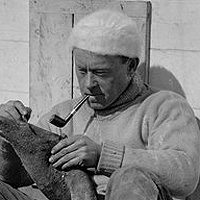
Levick, George Murray - Surgeon, R.N. Zoologist
Born in born in Newcastle upon Tyne in 1876, Murray joined the Royal Navy in 1902, a specialist in physical training.
A member of the Northern Party, he spent the austral summer of 1911-1912 at Cape Adare amongst the largest Adelie penguin colony in the world. A part of his studies of this colony were published initially in Greek only due to what he considered the "depraved" sexual practices of the penguins. He over wintered with five others in an ice cave in particularly uncomfortable conditions when they could not be picked up again by the Terra Nova due to ice conditions.
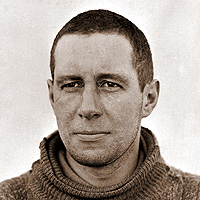
Oates, Lawrence Edward Grace, Capt. 6th Iniskilling Dragoons
Born London in 1880 into a wealthy family.
He applied to Scott to join the Terra Nova Expedition and was accepted because of his expertise with horses, his role was to look after the 19 ponies intended for sledge hauling. Oates contributed £1,000 (worth about £109,000 in 2017) to the expedition. He was selected as part of the 5 man South Pole Party. After reaching the pole and finding Amundsen's flag and tent already there, Oates weakened more quickly than the others on the way back, in particular he suffered from frost bitten feet.
Lawrence Oates walked into the history books on March 17th 1912, after going to sleep hoping not to wake, he awoke to once again find a blizzard and the temperature at -40C (-40F).
His last words were:
"I am just going outside and may be some time."
Oates' feet were too bad to get his boots on, so he walked out to his death in his socks, it was the day of his 32nd birthday. His body was never found, in November 1912 a cairn was erected with a cross inscribed:
"Hereabouts died a very gallant gentleman, Captain L. E. G. Oates, of the Inniskilling Dragoons. In March 1912, returning from the Pole, he walked willingly to his death in a blizzard, to try and save his comrades, beset by hardships."
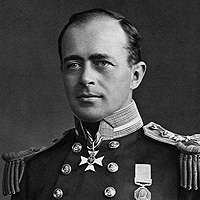
Robert Falcon Scott Commander, R.N. - Expedition leader
![]() expedition
leader Discovery
1901-04
expedition
leader Discovery
1901-04
Born into a fairly well to do family in Devonport, England in 1868, Scott began his naval career in 1881 at the age of 13. He was offered the command of the Discovery Expedition to Antarctica, though he had no real interest beyond the promotion it represented. This was the first expedition that struck out into the interior of Antarctica beyond the coastal regions that had been visited previously coming to within 480 miles of the South Pole. The expedition was deemed a great success in both exploration and scientific research, he became a popular hero on his return in 1904.
The Terra Nova Expedition was another far-ranging scientific and exploratory enterprise with one of the stated aims being to reach the South Pole. Scott's party became the second expedition to reach the South Pole in 1912, all five members perished on the return journey. When the news of the South Polar Party reached the UK they were feted as national heroes, a memorial service led by the King was held in St. Paul's Cathedral within days. Public subscriptions raised enough to pay off the expedition debts, and provide money for the families of the dead men, what remained was given to Cambridge University and used to found the Scott Polar Research Institute, still a world renowned research facility, polar library and museum.
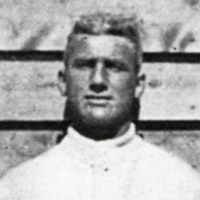
Abbott, George Percy - petty officer, R.N.
A member of the Northern Party at Cape Adare, wintered on Inexpressible Island. Abbot served with the Royal Navy in WW1, he died in 1923.
Archer, Walter William - Chief steward, late R.N.
Served as a shipboard cook for two years and then was assigned to the shore party for the final year replacing Clissold after concussed himself by a fall from an ice berg. He left the navy after the war and ran a catering business in London, he died on the 28th of January 1944.

Browning, Frank Vernon - petty officer, 2nd class, R.N.
Born in Stockland, Devon, England in 1882, joined the Royal Navy as a Boy 2nd Class in June 1900 at 18 and was made Petty Officer 2nd Class in November 1905, he was recruited to the Terra Nova Expedition from the Talbot, one of Lieutenant E. R. G. R. Evans (2nd in command on the expedition) old ships. Part of the Northern Party under Campbell, they spent one winter in the hut at at Cape Evans and another unplanned in an ice cave when the party could not be picked up due to heavy sea ice. Browning and Abbott constructed an entrance hatch to the cave from ski-sticks and ice blocks after the original snow construction kept collapsing bring with it the threat of asphyxiation. He also came up with a "blubber lamp" along with Dickason to light the otherwise pitch black living quarters which was fuelled by fat from the few penguins and seals they managed to capture through the winter.
Believed to have died in 1930 of pneumonia in Henly-on-Thames where he was working as a chauffeur.
June 1882 - 1930

Clissold, Thomas Charles - cook, late R.N.
An artificer (a highly skilled and experienced field mechanic) in the Royal Navy, Clissold joined the expedition as a cook, but also worked ashore as a dog handler and with sledges laying supply depots. While posing for a photograph being taken by Ponting in the summer of 1911-12, he fell off an iceberg sustaining a severe concussion leading to him being replaced as shore party cook the following year. He served in the Royal Flying Corps in WW1, emigrating to New Zealand when demobilized. He served in the Transport Department in Napier, NZ until his retirement in 1953.
1886 - 1963
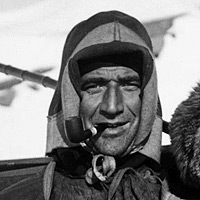
Crean, Tom , petty officer, R.N.
![]()
Born in Annascaul, County Kerry, Ireland, Crean joined the Royal Navy at 15, he joined Scott's Discovery expedition in 1901 and was well liked and respected by the other men.
Crean was one of the first men Scott chose for the Terra Nova expedition, appointed as an expert sledger and pony handler, one of the few men on the expedition with previous polar experience.
He was a part of the last group to be turned back 160 miles from the pole by Scott after not being selected for the final Pole Party, Scott described him as weeping with disappointment at having to turn back so close to the goal.
He set off back with Lashly and Edward Evans, a 730 mile journey. Evans showed signs of scurvy, Crean and Lashly began pulling him on the sledge. On the 18th of February, there were still 35 miles to go, 4-5 days manhauling with just 1-2 days of rations left, they decided Lashly would stay with Evans while Crean would fetch help. With little food and no tent or other equipment Crean walked for 18 hours to Hut Point, he arrived just before a blizzard struck which would almost have certainly have killed him had he been caught it, he was on the verge of collapse on arrival. Evans who was close to death and Lashly were successfully recovered.
Crean was a part of the group who found their final camp of the south pole party in November of that year.
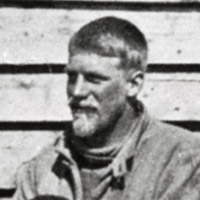
Dickason, Harry - Able seaman, R.N.
Born in Bristol, England in 1884. A member of the Northern Party at Cape Adare, wintered on Inexpressible Island. Dickason served with the Royal Navy in the WW1, he was pensioned by the Royal Navy in 1924 and died in 1943.
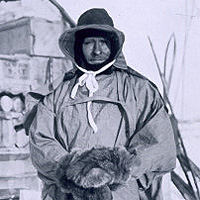
Evans, Edgar - Petty officer, 2nd class, R.N.
![]() Petty
officer
Discovery
1901-04
Petty
officer
Discovery
1901-04
Born 1876 in Middleton, Rhossili,
Wales, enlisted in the Royal Navy at 13 in 1891
and served on the same ship as Scott in 1899.
Evans was responsible for the sledges, tents and all the equipment that was taken by sledging parties, a task at which he excelled. He was one of the five man South Pole Party with Scott. Just before reaching the pole he cut his hand in an accident, the wound refused to heal properly and he continued to deteriorate both physically and mentally during the return journey suffering frostbite to fingers, nose and cheeks. He had a fall in a crevasse while descending the Beardmore Glacier causing a concussion from a head injury which rapidly worsened his condition.
On the 16th of February 1912 he collapsed and had to be temporarily left behind while the others in the party reached the next supply depot, on returning to get him Scott described him: "He was on his knees, clothing disarranged, hands uncovered and frostbitten and with a "wild look in his eyes"." He was taken to the tent on a sledge and put inside, he died during the night, there is no record of what happened to his body. He was 35 years old.
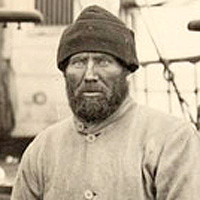
Forde, Robert - petty officer, R.N.
Born in Moviddy, County Cork, Ireland in 1875 and related to the car maker Henry Ford. He joined the Royal Navy at 16 in 1910 he volunteered for and was accepted on the Terra Nova expedition.
He spent two years of the expedition ashore at Cape Evans and took part in a western journey exploring and mapping the western mountains of Victoria Land. He left the expedition in the second summer due to a severe frost bite to his hand. He wore a glove on his hand to protect it following the effects of frostbite on his return for the rest of his life.
29 August 1875 - 13 March 1959

Girev (Geroff), Dmitriy Semenovich - Dog driver
Born in Sakhalin, Siberia in 1888. Dmitriy Girev was one of two Russians on Scott's expedition, they came to the attention of Meares who was sent to Siberia to buy both ponies and dogs for the expedition and were recommended as excellent handlers of the animals upon which they were both recruited.
Girev travelled to Antarctica via Vladivostok, Shanghai, and Sydney, joining the Terra Nova in Christchurch. He became a popular and effective member of the expedition and took part in laying supply depots with the dogs, he was also one of the team who found the dead members of the South Pole Party at their final camp.
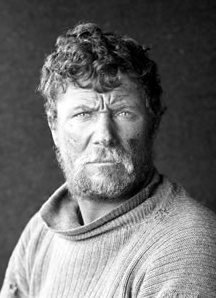 Keohane,
Patrick - petty officer, R.N.
Keohane,
Patrick - petty officer, R.N.
Born in Courtmacsherry, County Cork, Ireland in 1879, he was a seaman petty officer in the Royal Navy at the time of the expedition being selected by Teddy Evans for the expedition. He was part of the group at Cape Evans, participating in many sledging trips, he took part in the Southern Journey as part of the support party that ascended the Beardmore Glacier before being turned back. Later, he was part of the search party that found the dead polar party. He returned to Ireland after the expedition and joined the coast guard, rejoining the navy in WW2.
1879 - 1950
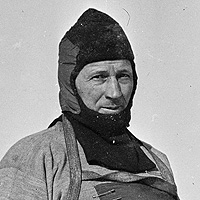
Lashly,
William - chief stoker, R.N.
William
Lashly's Diary: 25th December 1911 -
22nd February 1912
![]() Chief
stoker Discovery
1901-04
Chief
stoker Discovery
1901-04
Born in Hambledon, Hampshire, England in 1867, the son of a farm worker, Lashly left school at 11 and joined the Royal Navy at 21. On Scott's Discovery expedition of 1901-1904, he was acknowledged by Chief Engineer Reginald Skelton as "the best man far and away in the ship".
Lashly was in charge of one of the motor sledges, he set off with 2 of them to haul supplies for the pole attempt, within 5 days they had both broken down and the men had to resort to manhauling. He was a part of the last group of three turned back 160 miles from the pole by Scott after not being selected for the final Pole Party. He set off back to the hut with Crean and Edward Evans, a 730 mile journey.
Evans developed snow blindness and began to show signs of scurvy, Lashly and Crean began pulling him on the sledge. On the 18th of February, there was still 35 miles to go and 4-5 days manhauling with just 1-2 days of rations left. They decided that Lashly would stay with Evans while Crean would fetch help. Evans who was close to death and Lashly were successfully rescued, Lashly and Crean were awarded the Albert Medal.
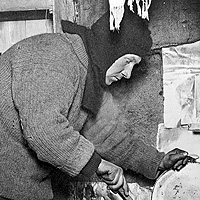
Omelchenko, Anton - Groom
Born in Bat'ki, near Poltava in the Ukraine in 1883, he was recruited by Meares to help select the Manchurian ponies he had been sent by Scott to buy. Along with fellow Russian Girev he accompanied the ponies and dogs via New Zealand to Antarctica. Omelchenko was assistant to Oates who was in charge of the ponies, he became a popular and hard working member of the expedition working with the ponies on several sledging journeys.
Williamson, Thomas Soulsbury - petty officer, R.N.
Replaced Forde in the second winter. One of the search party that found the bodies of Bowers, Scott and Wilson in their tent having died on the return journey from the South Pole.
Born 1877 Sunderland - died January 1940.Scientific Staff

Day, Bernard C. - Motor engineer
![]() electrician / motor mechanic
Nimrod 1907-09
electrician / motor mechanic
Nimrod 1907-09
Born in 1884 in Wymondham, Leicestershire and educated at Wellingborough Grammar School. Day was involved in engineering from 1903, he left the employ of the New Arrol Johnston Motor-Car Company to join Shackleton's Nimrod expedition, the first to take a motor car to Antarctica.
Scott took three motor sleds to Antarctica, the largest was lost while getting it ashore, the remaining two were unreliable and not well used.
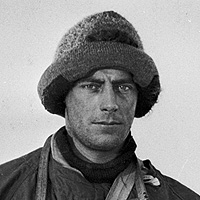
Debenham, Frank - Geologist
Born in New South Wales, Australia in 1883. Debenham didn't take part in the South Pole journey due to a knee injury sustained while playing football in the snow, he took part in two western journeys with others exploring and mapping the western mountains of Victoria Land.
In 1920 using the remainder of public donations received following the deaths of those in the Polar Party, Debenham along with Raymond Priestly founded the Scott Polar Research Institute, part of Cambridge University.
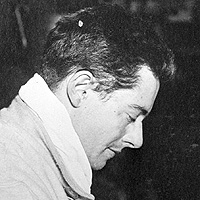
Cherry-Garrard, Apsley - Assistant zoologist
Born in Bedford, England. Cherry-Garrard joined the expedition with a £1,000 payment towards costs, Scott took him on as assistant biologist. Most famous for his widely acclaimed book about the journey he made with Bowers and Wilson to Cape Crozier to retrieve an emperor penguin egg The Worst Journey in the World.
He was part of the support team for the South Polar Party, reaching the top of the Beardmore Glacier before being sent back with his team. Before Scott left for the pole he gave orders to be met on the 1st of March 1912 at 82 or 82.30 degrees south by a dog team with supplies to help their return to the base. It fell to Cherry-Garrard to do this and along with Girev he set off on this journey on the 26th of February, reaching "One Ton Depot" on the 3rd of March, at the time Scott was 60 miles south of this point (3 days by dog team), they remained in the area until the 10th of March before returning due to a combination of poor weather and lack of dog food. Scott and the surviving members died 11 miles south of One Ton Depot on the 29th of March. Cherry-Garrard continued with his scientific work through the winter and was part of the team that found the bodies of Scott, Bowers and Wilson in their collapsed tent on the 12h of November.
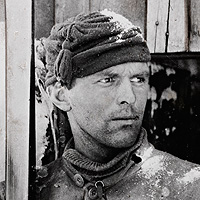
Gran, Tryggve - ski expert
Born in Bergen, Norway, he was recommended by Fridtjof Nansen to Scott as a ski instructor while in Norway to test the motor tractor.
Gran was involved in depot laying for the South Pole Party, in the journey to the western mountains and was part of the search party that found the dead bodies of the South Pole Party. He wore Scott's skis after collapsing the tent and building a cairn so that at least Scott's skis would make the full journey.
Before leaving Antarctica, he climbed Mount Erebus and had a near miss when an eruption ejected large pumice blocks.

Meares, Cecil Henry - in charge of dogs, Russian interpreter
Born in County Kilkenny, Ireland in 1877, Meares was an adventurer, Scott's by-the-book naval command structure didn't sit too comfortably with him.
He was tasked by Scott to buy 34 dogs and 20 ponies for the expedition, he knew little about ponies though went to Siberia as instructed to obtain them. Meares took part in depot laying journeys with the dogs, though in Early 1912 he resigned for reasons that are not clearly recorded and returned home on the Terra Nova in March that year.
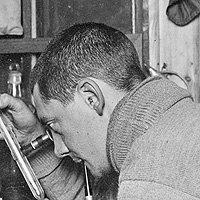
Nelson, Edward W. - Biologist
A marine biologist who worked at the Marine Biological Association of the United Kingdom in Plymouth prior to the expedition. He took part in a sledging journey to One Ton Depot laying supplies.
He returned to his old employer in Plymouth after the expedition though soon leaving to fight in WW1 where he served in Gallipoli and on the Western Front. He later became Scientific Superintendent of the Fisheries Board for Scotland. He committed suicide by self administered lethal injection in 1923 at the age of 39.
1883 - 1923
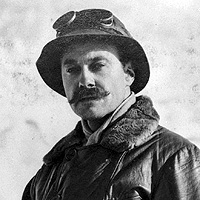 Ponting,
Herbert George - Camera artist
Ponting,
Herbert George - Camera artist
Born in Salisbury, Wiltshire, England in 1870, after trying his hand at a range of occupations, he turned his long standing hobby of photography into a profession. He built up a reputation as a photo-journalist and Scott engaged him as expedition photographer on the Terra Nova, the first professional photographer to accompany an Antarctic expedition.
The great majority of the photographs of the Terra Nova Expedition were taken by Ponting. He spent 14 months in Antarctica leaving in February 1912 with over 1,700 photographic plates. With Scott's death the expeditions debts were paid off and more, so Ponting's pictures became more of an epitaph than a celebration and earned him little money. He produced two films from his material, The Great White Silence (1924 - silent) and Ninety Degrees South (1933 - with sound).
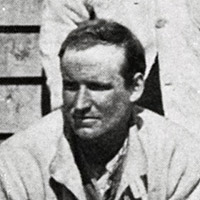
Priestley,
Raymond E. - Geologist
![]() Geologist
Nimrod 1907-09
Geologist
Nimrod 1907-09
Born in Bredon's Norton near Tewkesbury, England in 1886, Priestley studied Geology at Bristol University and joined Shackleton's Antarctic Nimrod Expedition (1907-09) as a geologist.
He was recruited by Scott for the Terra Nova expedition when the ship called at Sydney on the way south. He was part of what was intended to be an Eastern Party of 6 men led by Campbell but became the Northern Party after a suitable landing site could not be found, they built a hut and wintered at Cape Adare in 1911.
The following summer the Terra Nova transferred them 250 miles south by to Evans Cove with enough sledging rations for 6 weeks and the intention of staying 2 weeks before being picked up again. Sea ice conditions meant they could not be reached and had to over-winter again. An ice cave was dug on Inexpressible Island and a miserable winter ensued, the occasional seal or penguin added to the meager rations. They marched back to Cape Evans at the end of winter, crossing 200 miles of sea ice arriving on the 7th of November 1912.
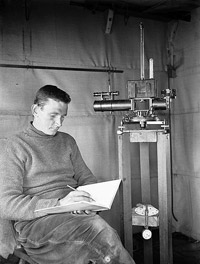
Simpson,
George Clarke - Meteorologist
Born in Derby, England in 1878, Simpson joined the Indian Meteorological Service before being appointed as one of two meteorologists to the Terra Nova expedition.
He was given the nickname "Sunny Jim" because of his resemblance to a character on cereal packets. Simpson spent most of his two years in Antarctica at the hut at Cape Evans to maintain continuity of the meteorological records, he installed and maintained the most sophisticated array of recording apparatus that had been taken to Antarctica at that time producing reports on the weather and atmospheric physics that received wide acclaim. He accompanied Scott, Bowers and Evans on a sledging trip in October 1911.
Taylor, Thomas Griffith - Geologist

Born in Walthamstow, England in 1880,
the family emigrated to Australia when Thomas was
13, he was awarded a scholarship to Cambridge University
in 1907 when he became friends with Raymond Priestley,
Charles Wright and Frank Debenham all of whom he
recruited to Scott's Terra Nova expedition.
Taylor was the leader of the geological team who made the first geological maps and studies of large areas of Antarctica, leading two expeditions to unexplored areas to do so. During the second of these, Taylor's party were due to be picked up by the Terra Nova on Jan 15th 1912, but the ship could not reach them, on the 5th of Feb, they set off across the ice where they were seen and picked up on the 18th of Feb, returning home in March unaware of the fate of Scott and his party.
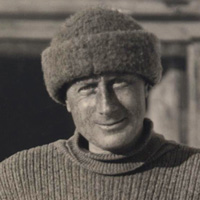
Wilson, Edward Adrian - chief of scientific staff and biologist
![]() Assistant
surgeon Discovery
1901-04
Assistant
surgeon Discovery
1901-04
Born in Cheltenham, England in 1872, read Zoology before qualifying in medicine at St. George's Hospital London. Wilson became ill with tuberculosis, during the long convalescence he practiced and developed his skills as an artist.
In 1901, Wilson applied to be doctor on Scott's Discovery Expedition to Antarctica, he made an attempt on the South Pole with Scott and Shackleton, they reached the furthest south point at that time.
On the Terra Nova Expedition he led Cherry-Garrard and Bowers on a winter journey to Cape Crozier to retrieve an emperor penguin egg in the winter of 1911, famously written about in Cherry-Garrard's book "The Worst Journey in the World". The three men endured the coldest temperatures recorded on the expedition, as low as -57C (-70F) in the dark of the Antarctic night. Wilson was one of the 5 man South Pole Party who perished on the return journey, he died in the tent at the last camp with Scott and Bowers at the age of 39.
Known as "Uncle Bill", popular for his easy manner, Wilson gained great respect from the men he worked with, A lasting and acclaimed legacy is the collection of water colour pictures that he made during his two Antarctic expeditions.
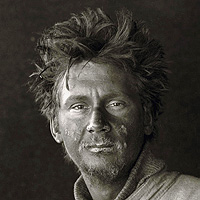
Wright,
Charles Seymour - Physicist
Born in Toronto, Canada in 1887, sometimes known as "Silas" from his middle name.
In Antarctica, Wright carried out numerous experiments and observations on the physics of ice and snow, gravity, the aurora and magnetism, he also assisted in meteorology. He was part of a four man team who mapped the western mountains of Victoria Land and made geological observations. He set off with the Southern Party to the South Pole, hoping to be one of those chosen to go with Scott though was part of the first support party sent back with around 300 miles to go. Nearly a year later he was part of the search party that found the tent with the bodies of Scott, Bowers and Wilson who had died on the return journey.
The Ship's Party
The Terra Nova left Cardiff docks, Wales on the 15th of June 1910 and returned on the 14th of June 1913. It sailed to New Zealand before going to Antarctica, it went to Antarctica three times from New Zealand during the austral summers of 1910-1911, 1911-1912 and 1912-1913, it spent the two intervening winters in 1911 and 1912 in New Zealand. Some of the ships' company were engaged for the whole of this period and others for a part only. Generally speaking the ships' company spent their time only on the ship and would only go ashore in Antarctica for short periods for work or recreation, their berths were on the ship, though some might spend short periods ashore if their job required it.
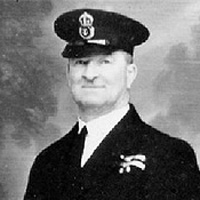
Balson, Albert - Leading seaman, R.N.
Born on 12 February 1885 at Allington, near Bridport, Dorset. As a boy he walked to Portland to enlist in the Royal Navy. He was taken into boy service on 2 October 1900, signing on for twelve years service. By 1911 he was a Leading Seaman in H.M.S. Powerful when on the 6th December he transferred to the Terra Nova at Lyttleton. He took part in her second and third voyages to the Antarctic and received the Polar Medal.
He served in WW1 taking part in the Gallipoli landings. Following the war he worked as salvage diver being employed for several years collecting gold bars from the ship, Laurentic which had been sunk in the war. He was decorated in WW2 for diving work, he died aged 65 in 1950.
Brissenden, Robert - Leading stoker, R.N.
-
Drowned at Elmslie Bay, French Pass (South Island,
New Zealand) while surveying Admiralty Bay in 1912,
the grave is on the hill above the wharf at Elmsie
Bay erected by members of the expedition.


Bruce, Wilfred Montague - Commander, R.N.R.
Born in Scotland, Bruce became an officer in the merchant navy and the Royal Naval Reserve, he was Scotts brother in law. He helped in the collection and transportation of the ponies and dogs for the expedition from Vladivostok and then served as second officer on the Terra Nova. He served as a captain RNR in WW!, retiring from this shortly after the war to become a pig farmer.
1874 - 1953
-
Died in Christchurch, New Zealand, 1988, seven weeks
short of his 100th birthday, the last surviving
man from the Terra Nova expedition. Bill Burton
made the three trips to Ross Island on the Terra
Nova. In 1963, with Mortimer McCarthy and William
McDonald he revisited Antarctica as guests of the
US Navy on the supply ship USS Arneb.
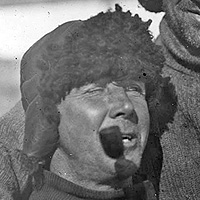
Cheetham, Alfred Buchanan - Boatswain (Bosun), R.N.R.
![]() Morning - relief ship for the Discovery 1902
Morning - relief ship for the Discovery 1902
![]() Third officer and boatswain
Nimrod 1907-09
Third officer and boatswain
Nimrod 1907-09
![]() Third officer
Endurance
1914-17
Third officer
Endurance
1914-17
Born in Liverpool in 1867, his family moved to Hull where Cheetham ran away to sea as a teenager working on North Sea fishing boats. He became a merchant navy boatswain and a Royal Naval Reservist.
Cheetham first went to Antarctica on the Morning in the austral summers of 1902-3 and 1903-04. He met Shackleton on the second voyage and was invited on his Nimrod expedition as boatswain and third officer. He held the same roles on the Terra Nova and again with Shackleton on the Endurance.
A popular and cheerful member of crews on which he served, Frank Worsley (captain of the Endurance) called him "a pirate to his fingertips".
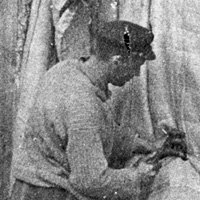
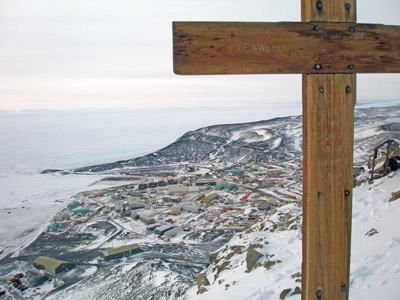
Davies, Francis Edward Charles - Leading shipwright, R.N.
Francis was responsible for fitting out the expedition ship, the Terra Nova, prior to the expedition she had been used for whaling and sealing. He also designed and built the prefabricated hut at Cape Evans. Later on when returning on the Terra Nova and hearing of the death of Scott and the polar party, he made the memorial cross that still stands on Observation Hill near to what is now McMurdo base.
He returned to Plymouth, England to live after the expedition. He served in WW1 on mine laying operations, in 1919 he travelled to Archangel, Russia where he was in charge of docking and ship repairs on the White Sea and Dvina River.
From 1927 to 1934 he served on the Discovery Expeditions, a series of scientific and oceanographic voyages. In WW2 he served in the Royal Naval Volunteer Reserve.

Dennistoun, James R. - In charge
of mules in the ship.
Born in 1883 in Canterbury, New Zealand and educated for a time in England before returning to New Zealand where he found some fame as a mountaineer. He met Pennell in 1911 while the Terra Nova was in New Zealand for the austral winter of 1911 and was appointed to look after a group of Indian mules and Siberian dogs that were being taken to Antarctica the following summer, there was no pay, just adventure on offer, he spent a single summer in Antarctica. Dennistoun had to supply much of his own clothing.
He travelled to England at the outbreak of WW1 where he enlisted initially as an intelligence officer, and shortly afterwards in the Royal Flying Corps. In June 1916 he was shot down near to enemy trenches, he survived and was operated on three times but died of his injuries about 6 weeks later on August the 9th. A glacier is named after him in Antarctica as are some mountain features in New Zealand.
1883 - Aug 9th 1916
Heald, William Lofthouse - R.N. Late P.O.
![]() Seaman
Discovery
1901-04
Seaman
Discovery
1901-04
An island was named in his honour after he saved the life of Hartley T. Ferrar when suffering from scurvy on the Discovery expedition in 1902
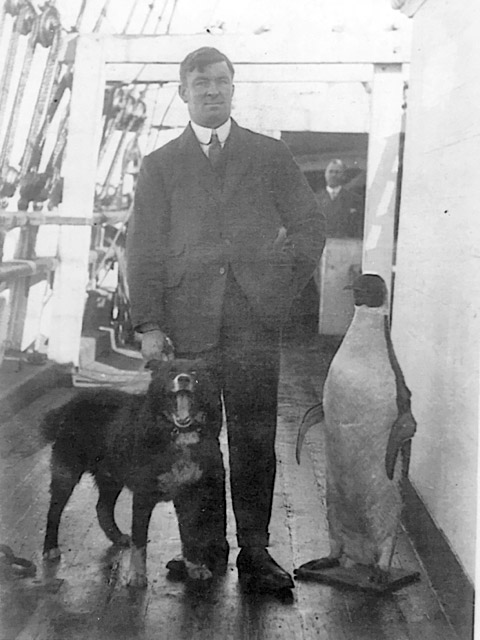
Knowles, William - Able seaman
![]() Morning - relief ship for the Discovery 1902
Morning - relief ship for the Discovery 1902
Born in Liverpool, England in 1877, he emigrated to Lyttleton, New Zealand where he joined the Royal Naval Reserve. He joined the relief ship Morning as part of Scott's earlier Discovery expedition and became an able seaman on the Terra Nova, he helped build the memorial cross on Observation Hill following the discovery of the deaths of the South Pole Party. After the expedition, on the 7th of February 1915, Knowles had the dubious distinction of being the first New Zealander killed as a result of enemy action in WW1 at the age of 38, he had married in 1904 and left a wife and two children. more on Able Seaman William Knowles.
1877 - 1915
Lammas, Charles Frederick - Fireman
Born in Bethnal Green, London, England in 1883. Lived in Dunedin, New Zealand before the expedition and returned there afterwards.
1875 - 1941
Leese, Joseph - Able seaman, R.N.
Born in Staffordshire, joined the Royal Navy aged 15. On return to England, he became a coal miner in 1914, died in 1948 at the age of 64
died 1948
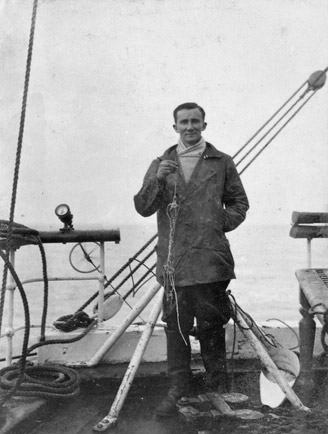
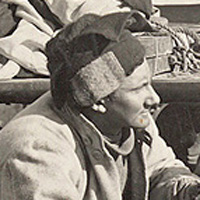
Lillie, Dennis Gascoigne - Biologist in the ship
Born 1884 in Kensington, London into a family from New Zealand and educated at Birmingham and Cambridge Universities. He was recruited by Edward Wilson for the Terra Nova expedition and spent three years on the ship from Cardiff in 1910 and back again in 1913. He collected many marine specimens from on board the Terra Nova using nets and dredges of various kinds, many of which were unknown to science, he never went ashore in Antarctica. He was also a skilled caricaturist making drawings of some of those on the expedition, some of his caricatures are in the National Portrait Gallery, London.
In WW1 being a conscientious objector, he served as a military bacteriologist, he suffered a severe mental breakdown in February 1918 when he was admitted to Bethlem Hospital, London for three years, though he never fully recovered. Usually stays at Bethlem were limited to a year, this was waived because of payments from the Captain Scott Memorial Fund. Lillie was intellectual, eccentric and popular with his companions.
1884 - 1963
Mather, John Hugh - Petty officer, R.N.V.R.
Born in Stroud Green, London, he was n the Royal Navy Volunteer Reserve helping to load the Terra Nova when he applied to join the ship, serving for three years as petty officer. He helped in particular with the clerical work and became skilled in taxonomy. Later as a commissioned officer, he served in WW1 taking place in a successful campaign in Arctic Russia against the Bolsheviks, he retired with the rank of commander. He began the Antarctic Club in 1929, an annual dining club for the former members of British expeditions, he remained the honorary secretary until he died.
1887 - 1957
 McCarthy,
Mortimer - Able seaman
McCarthy,
Mortimer - Able seaman
Born in Kinsale, County Cork, Ireland in 1878, older brother to Tim McCarthy, one of only two pairs of brothers to serve with Scott and Shackleton. Mortimer lied about his age and went to sea at 12, he served in the Royal Navy during the Boer War. He made three round-trips to the Antarctic on the Terra Nova, later settling in Lyttleton, New Zealand, he worked as a seaman for over 70 years and was still working on ships in his 80s. He made a nostalgic trip to Antarctica 1963 at the age of 81, he died in a fire at his home aged 85.
15 April 1878 - 1967
McDonald, Angus - Fireman
Born in West Lothian, Scotland in 1871, after the expedition lived in Invercargill, New Zealand.
born 1871
McGillon, Thomas - Fireman
![]() Trimmer Nimrod
1907-09
Trimmer Nimrod
1907-09
McKenzie, Edward A. - Leading stoker, R.N.
Born in Norfolk, England in 1888, joined the Royal Navy in 1903 and reached the rank of leading stoker by the time he volunteered for the expedition. On his return and on leaving the navy, he joined the London Metropolitan Police. He served in the army and navy in WW1, going back to the police afterwards until he was invalided out in 1942.
1888 - 1973
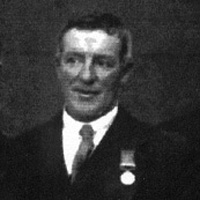
McLeod, Thomas F. - Able seaman
![]() Terra Nova 1910 - 13
Terra Nova 1910 - 13
![]() Able seaman
Endurance
1914-17
Able seaman
Endurance
1914-17
![]() Able Seaman
Quest
1921 - 1922
Able Seaman
Quest
1921 - 1922
Born in Glasgow, Scotland and brought up in Stornoway, the Outer Hebrides, McLeod first went to sea aged 14. He was one of very few able seamen who received two polar medals, one from the Terra Nova expedition and the other from the Endurance. After his Antarctic adventures he moved to Kingston, Ontario, Canada.
3rd April 1873 - 16th of December 1960
Oliphant, Robert - Able seaman
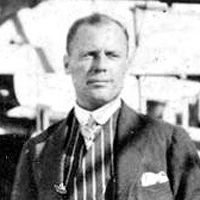
Parsons, Frederick - Petty officer, R.N.
Born in Bridport, Dorset, England in 1878. Parsons joined the Royal Navy aged 18 in 1896, he rose to Chief Petty Officer and applied to join the Scott's Terra Nova expedition in 1909. Though one of over 8,000 applicants, he succeeded. He set sail on the Terra Nova on the 15th of June 1910 from Cardiff.
Parsons returned to his native Plymouth after the expedition and ran a shoe repair business, he called his bungalow "Terra Nova". He was the last surviving member of the expedition when he died at the age of 91 in 1970.
1878 - 1970
![]() Morning - relief ship for the Discovery 1902
Morning - relief ship for the Discovery 1902
![]() Able seaman
Nimrod 1907-09
Able seaman
Nimrod 1907-09
![]() Boatswain, Aurora on Shackleton's 1914-17 trans-Antarctic
Expedition - Ross Sea Party
Boatswain, Aurora on Shackleton's 1914-17 trans-Antarctic
Expedition - Ross Sea Party
Known as "Scotty". The Morning was a relief ship for Scott's Discovery expedition, voyaging twice to Antarctica from New Zealand. During the first trip and while the ship was not moving between Cape Bird and Beaufort Island, Paton left the ship and jumped from one ice floe to the next to reach Beaufort Island about a mile away. In doing so he became the first person to set foot on the island, earned himself a reprimand and the later distinction of having Paton Peak on Beaufort Island named after him.
Following the return of the Aurora to New Zealand, Paton signed on as boatswain when the ship was sold as a coal carrier. The ship and her crew including Paton were lost in late 1917 or early 1918 after loading with coal in Newcastle, New South Wales in June 1917 bound for Chile. It is thought that she was most likely sunk after hitting a mine laid by the German raider Wolf.
Born Glasgow 1869 - died 1917 or 18, lost with the Aurora
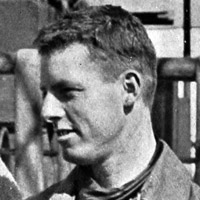
Pennell, Harry Lewin Lee - Navigator, Lieutenant, R.N.
Pennell spent his time on the Terra Nova, going back and forth between Antarctica and New Zealand, spending two austral winters in Lyttleton, New Zealand, he was a keen amateur naturalist and helped biologists Wilson and Lillie in their studies of birds and whales.
Following the expedition, he was assigned to the HMS Queen Mary (a battlecruiser) as a navigator in 1914, he died in the battle of Jutland when the Queen Mary was sunk with the loss of 1,266 lives on the 31st of May 1916. more on Pennell and the battle of Jutland
1882 - 1916
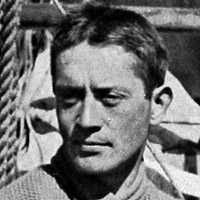
Rennick, Henry Edward de Parny - Lieutenant, R.N. Hydrographer, First Officer
Rennick was in charge of hydrography on the Terra Nova, plotting the features of the sea and taking deep sea soundings. He remained on the ship while in Antarctica under the command of Pennell. Rennick Bay and the Rennick Glacier in Antarctica are named after him.
He served on H.M.S. Hogue in WW1 where he lost his life when the ship and two others were sunk by a U boat on the 22nd of September 1914. He had a lifebelt but gave it to another man who had children not knowing that his wife was pregnant at the time with a son he never met.
Rennick had met his wife in Dunedin, New Zealand on the way down to Antarctica, they met up again on the way back and were married in London.
Skelton, James - Able seaman
Born in Lincolnshire, England, he was a senior engineer in the Royal Navy when he joined the Terra Nova expedition and supervised the fitting out of the ship. He took part in several sledge journey's though due to naval protocols he was left behind by the South Pole Party rather than accompanying the motor sledges, possibly partly as a result of this they both broke down within 5 days, Skelton as the expert could perhaps have kept them going for longer. He became an accomplished photographer during his time in Antarctica.
In WW1, he was in charge of the dockyard facilities at Archangel, Russia. He retired from the navy with the rank of Engineer Vice-Admiral in 1932 and became a director of Thorneycroft and Co. shipbuilders.
1872 - 1956
Williams, Charles - Able seaman
Born in Lyttleton, New Zealand the son of a master mariner, he went to sea in 1895 and joined the navy in 1900. He received the Antarctic Medal and Royal Geographical Society Medal following his action that stopped the Terra Nova foundering in a storm, cutting a hole in a bulkhead between the boilers in blistering heat to allow a blocked pump to be cleared.
In 1915 he received a letter from Teddy Evans, captain of the Terra Nova and second in command of the expedition, and went to England to join the Royal Navy, he served under Evans on HMS Broke during a famous action where she encountered 6 German battleships along with HMS Swift. Williams became engaged in deck fighting with cutlasses and bayonets when the Germans boarded the Broke for which he received the Distinguished Service Order and a promotion. He was lost at sea off New Zealand in 1919.
1881 - 1919
Biographical information
- I am concentrating on the Polar experiences of the men involved.
Any further information or pictures visitors may have will be gratefully received.
Please email
- Paul Ward, webmaster.
What are the chances that my ancestor was an unsung part of the Heroic Age
of Antarctic Exploration?
Robert Falcon Scott Books and Video

The Coldest March: Scott's Fatal Antarctic Expedition
by Susan Solomon
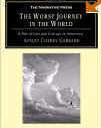
The Worst Journey in the World. Apsley Cherry-Garrard

The Voyage of the Discovery: Scott's First Antarctic Expedition
by Robert Falcon Scott, Ross MacPhee (Introduction), Fridtjof Nansen (Preface)

The Great White South: Travelling with Robert F. Scott's Doomed
South Pole Expedition by Herbert Ponting

Scott's Last Expedition: The Journals of Captain R.F.Scott

Edward Wilson's Antarctic Notebooks
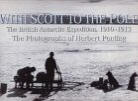
With Scott to the Pole
Herbert Ponting, illustrated

Discovery Illustrated: Pictures from Captain Scott's First Antarctic Expedition

Captain Scott by Sir Ranulph Fiennes

90 Degrees South: With Scott to the Antarctic (1933) DVD

History Chapters: Roald Amundsen and Robert Scott Race to the South Pole. Ages 4-8

Diary of the "Terra Nova" Expedition to the Antarctic, 1910-12

